Student Spotlight – Hunter Housa
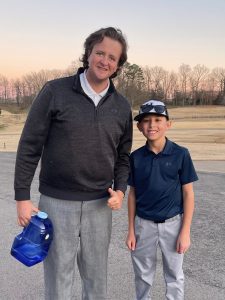 By Bo Harris, USGTF Professional
Hunter Mousa is an 11-year-old who just started playing competitive golf last fall. He started out with a maximum handicap of 30. His initial goal was to be able to gauge how his game compared to other kids his age. He quickly found that in order to improve, he needed to focus on putting. After a few lessons using a SeeMore putter, he started to see a major improvement. He then started working on his swing and understanding the numbers on the TrackMan.
Since he played baseball for many years, his focus was to improve his golf swing from inside to out. He has since lowered his handicap to 15 and shoots in the mid to low 80s. Some of his accomplishments this past year include making the varsity middle school golf team as a 5th grader, placing in the top three in his last seven tournaments, and getting his first win by shooting even par. He has a strong desire to continuously improve his game. He is now working on his distance and club speed. You can follow his golf journey on Instagram @ridamousa40.
As a teaching professional I have come across numerous students of all ages that tell me how they want to get better but seem to only swing a golf club when we are together. Hunt could not be more different. He loves this game and he loves the grind. If he’s not doing his schoolwork, he has a golf club in his hands and is rigorously taking notes on what he’s doing to get better. Keep in mind, he’s only in 5th grade! To conclude, I have worked with hundreds of juniors from all aspects of talent and age, and this kid inspires me every time I see him on my lesson tee.
By Bo Harris, USGTF Professional
Hunter Mousa is an 11-year-old who just started playing competitive golf last fall. He started out with a maximum handicap of 30. His initial goal was to be able to gauge how his game compared to other kids his age. He quickly found that in order to improve, he needed to focus on putting. After a few lessons using a SeeMore putter, he started to see a major improvement. He then started working on his swing and understanding the numbers on the TrackMan.
Since he played baseball for many years, his focus was to improve his golf swing from inside to out. He has since lowered his handicap to 15 and shoots in the mid to low 80s. Some of his accomplishments this past year include making the varsity middle school golf team as a 5th grader, placing in the top three in his last seven tournaments, and getting his first win by shooting even par. He has a strong desire to continuously improve his game. He is now working on his distance and club speed. You can follow his golf journey on Instagram @ridamousa40.
As a teaching professional I have come across numerous students of all ages that tell me how they want to get better but seem to only swing a golf club when we are together. Hunt could not be more different. He loves this game and he loves the grind. If he’s not doing his schoolwork, he has a golf club in his hands and is rigorously taking notes on what he’s doing to get better. Keep in mind, he’s only in 5th grade! To conclude, I have worked with hundreds of juniors from all aspects of talent and age, and this kid inspires me every time I see him on my lesson tee.


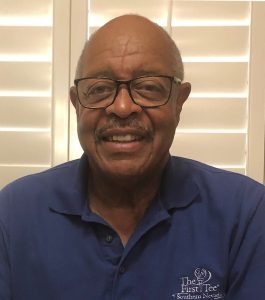 Bill Rice of Las Vegas, Nevada, is one of the USGTF’s most respected and skilled teachers. He conducts approximately six certification courses per year for the organization, including the annual Master Golf Teaching Professional class. He comes to the golf teaching industry after a career in public education, serving as a public school teacher and principal. But his start in golf is an interesting story.
Rice attended school in Michigan, and when the school system became integrated, he was invited to play golf. Thinking it was nothing more than hitting a ball and putting it into the hole, when asked what he shot for nine holes, he answered, “55.” Told he would never shoot that, the first time out he did right on the nose, and the next year he was down to a scratch. He read every book he could get his hands on in an effort to make himself a good golfer, and the efforts paid off.
Rice currently also teaches at the Legacy Golf Club in Las Vegas, and said he receives his greatest joy when his students learn and improve.
Bill Rice of Las Vegas, Nevada, is one of the USGTF’s most respected and skilled teachers. He conducts approximately six certification courses per year for the organization, including the annual Master Golf Teaching Professional class. He comes to the golf teaching industry after a career in public education, serving as a public school teacher and principal. But his start in golf is an interesting story.
Rice attended school in Michigan, and when the school system became integrated, he was invited to play golf. Thinking it was nothing more than hitting a ball and putting it into the hole, when asked what he shot for nine holes, he answered, “55.” Told he would never shoot that, the first time out he did right on the nose, and the next year he was down to a scratch. He read every book he could get his hands on in an effort to make himself a good golfer, and the efforts paid off.
Rice currently also teaches at the Legacy Golf Club in Las Vegas, and said he receives his greatest joy when his students learn and improve. 
 In our efforts to upgrade and improve every aspect of the USGTF and WGTF, the WGTF will launch a new website soon. The WGTF is a vital organization that brings many national teaching federations under one umbrella, developing a synergy that is crucial to the growth and strength of each individual federation.
In our efforts to upgrade and improve every aspect of the USGTF and WGTF, the WGTF will launch a new website soon. The WGTF is a vital organization that brings many national teaching federations under one umbrella, developing a synergy that is crucial to the growth and strength of each individual federation. 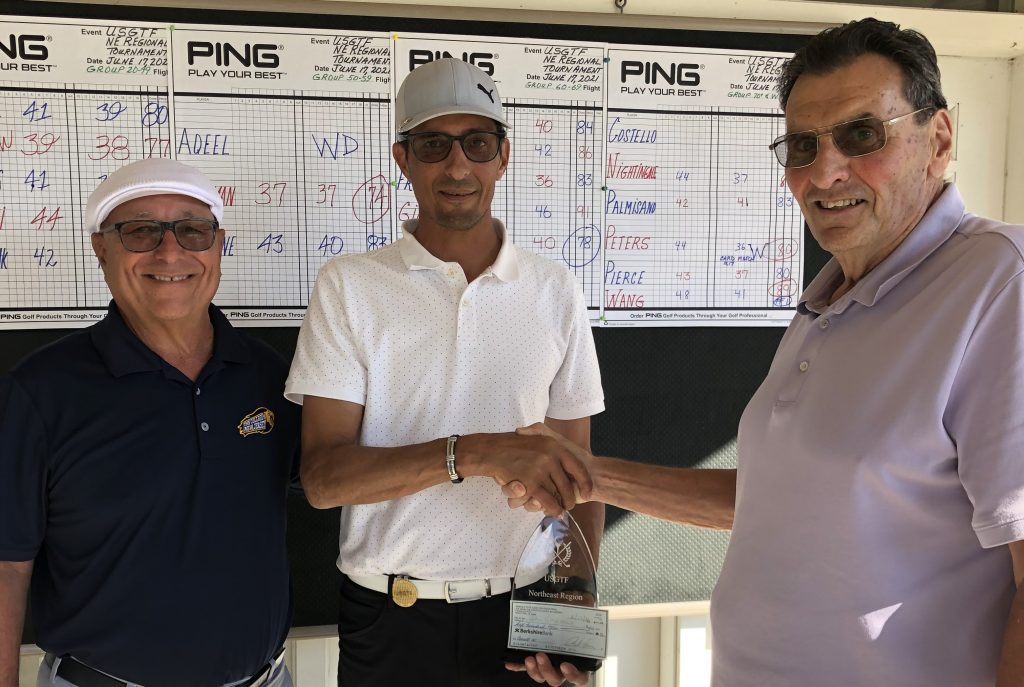 Northeast – Congratulations to Jonathan Dorfman, who won the USGTF Northeast Region Championship held at Mountain View Golf Course in Ewing, New Jersey, on June 17. Dorfman earned a first-place check of $700 for his winning play, firing a 74 to defeat runner up Joe Lee by three shots. Lee earned $400 for his efforts, with Jim Grow another stroke back at 78. Grow earned $300. On the Ladies’ side, Haiyan Wang took home top honors. The Northeast Championship regularly features the largest field of all the region championships.
Northeast – Congratulations to Jonathan Dorfman, who won the USGTF Northeast Region Championship held at Mountain View Golf Course in Ewing, New Jersey, on June 17. Dorfman earned a first-place check of $700 for his winning play, firing a 74 to defeat runner up Joe Lee by three shots. Lee earned $400 for his efforts, with Jim Grow another stroke back at 78. Grow earned $300. On the Ladies’ side, Haiyan Wang took home top honors. The Northeast Championship regularly features the largest field of all the region championships.
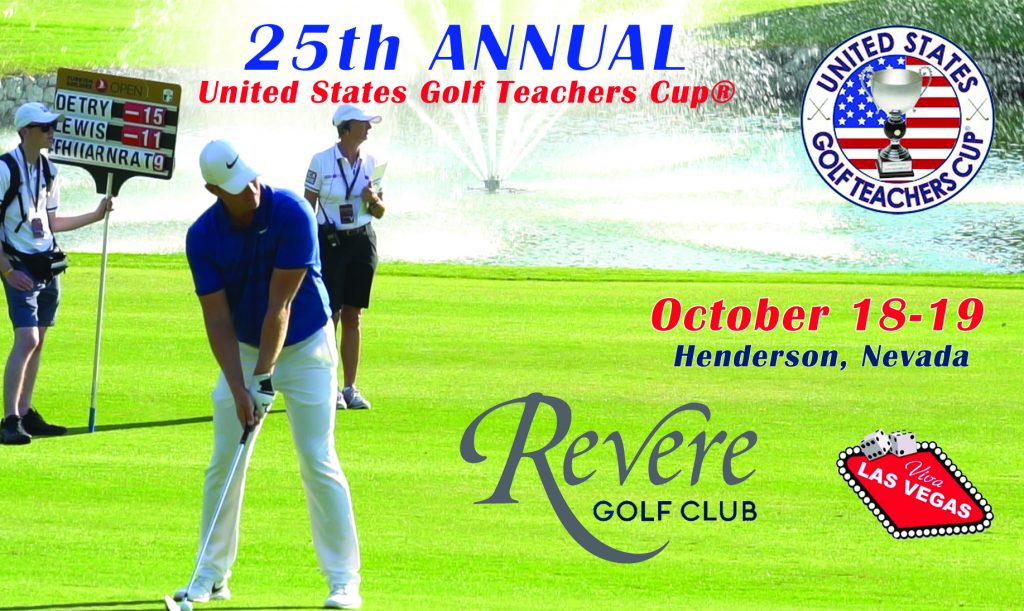 The Luxor Las Vegas Hotel & Casino has been signed on as the host hotel for the 25th annual United States Golf Teachers Cup to be held Monday and Tuesday, October 18-19, at Revere Golf Club in Las Vegas, Nevada. The Luxor is one of the most sought-after properties on the Las Vegas strip. Rates of $155 on Saturday night and $55 from Sunday through Thursday are being offered to all participants.
Also, practice round rates at the Revere are being offered at 25% off from October 11-17, use Group code (USCUP) when booking
The Luxor Las Vegas Hotel & Casino has been signed on as the host hotel for the 25th annual United States Golf Teachers Cup to be held Monday and Tuesday, October 18-19, at Revere Golf Club in Las Vegas, Nevada. The Luxor is one of the most sought-after properties on the Las Vegas strip. Rates of $155 on Saturday night and $55 from Sunday through Thursday are being offered to all participants.
Also, practice round rates at the Revere are being offered at 25% off from October 11-17, use Group code (USCUP) when booking  Phil Mickelson shocked the golf world when he won the PGA Championship this past May. Never before had anyone 50 years old or older won a major championship, but Mickelson turned back the clock and played like the Mickelson of old instead of an old Mickelson. And a number of players on the PGA Tour Champions have said that once they turned 50, they are playing the best golf of their careers. But a closer examination of that reveals that that simply isn’t true, because if it were, they’d still be playing and winning on the PGA Tour.
Phil Mickelson shocked the golf world when he won the PGA Championship this past May. Never before had anyone 50 years old or older won a major championship, but Mickelson turned back the clock and played like the Mickelson of old instead of an old Mickelson. And a number of players on the PGA Tour Champions have said that once they turned 50, they are playing the best golf of their careers. But a closer examination of that reveals that that simply isn’t true, because if it were, they’d still be playing and winning on the PGA Tour.
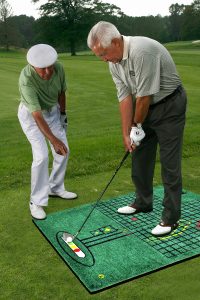 A revolutionary golf training mat (ForeMat) is starting to get a lot of attention. It has been successful for students of university coaches and top golf instructors.
ForeMat, a new training tool with built-in instructions, corrects the most common errors of more than 80% of golfers related to aim and alignment (head control). Practicing and perfecting this pre-shot routine develops good golf habits, making it possible for the golfer to be in the best physical and mental position prior to swinging, resulting in the head of the club square at impact and a straight shot at the target.
The methodology incorporates published tips of PGA tour pros such as Jack Nicklaus, Ernie Els and Rory McIlroy, which contributed to their own success on the course. ForeMat was originally called “The Good Golf Habit.” Bob Toski, PGA Hall of Famer, has no hesitation in endorsing this very innovative teaching mat as the best teaching aid he has seen in 50 years.
For more information, go to
A revolutionary golf training mat (ForeMat) is starting to get a lot of attention. It has been successful for students of university coaches and top golf instructors.
ForeMat, a new training tool with built-in instructions, corrects the most common errors of more than 80% of golfers related to aim and alignment (head control). Practicing and perfecting this pre-shot routine develops good golf habits, making it possible for the golfer to be in the best physical and mental position prior to swinging, resulting in the head of the club square at impact and a straight shot at the target.
The methodology incorporates published tips of PGA tour pros such as Jack Nicklaus, Ernie Els and Rory McIlroy, which contributed to their own success on the course. ForeMat was originally called “The Good Golf Habit.” Bob Toski, PGA Hall of Famer, has no hesitation in endorsing this very innovative teaching mat as the best teaching aid he has seen in 50 years.
For more information, go to 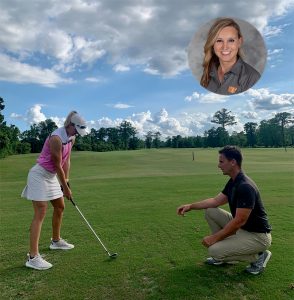 Coached by Thomas T Wartelle, WGTF & PGA
Shelby Warner is a playing professional originally from Lima, Ohio. Her goal is to play professional golf on the LPGA Tour. Before turning professional, she was a student-athlete at the University of Findlay in Ohio, where she graduated in 2017 with an MBA in Finance and Accounting. Feeling like her athletic career was unfinished, she has decided to pursue a career as a professional golfer. Shelby now travels the country playing on the WAPT Tour to prepare for 2021 LPGA Qualifying School.
Currently based in New Orleans, Louisiana, she is coached by Thomas T Wartelle, WGTF & PGA Professional. The main focus is on her swing, short game, and tournament preparation.
Shelby is pound for pound one of the longer hitters in ladies golf. However, she also possesses great finesse and control both with her irons and short game.
Being a playing professional takes hard work, perseverance, and sponsors. Shelby is building her team on all fronts, from golf coaching to fitness.Shelby trains using the GOATA Golf System. This system uses slow motion technology to identify incorrect movement patterns that cause pain, inconsistent golf, and potential ligament and joint damage. Using this technology, Shelby is able to apply it to her golf swing and workouts. GOATA Golf allows her to move better and play better.
Look for Shelby on tour as she is a rising athlete who works hard on her game. You can support and follow Shelby’s golf career on social media at
Instagram:
Coached by Thomas T Wartelle, WGTF & PGA
Shelby Warner is a playing professional originally from Lima, Ohio. Her goal is to play professional golf on the LPGA Tour. Before turning professional, she was a student-athlete at the University of Findlay in Ohio, where she graduated in 2017 with an MBA in Finance and Accounting. Feeling like her athletic career was unfinished, she has decided to pursue a career as a professional golfer. Shelby now travels the country playing on the WAPT Tour to prepare for 2021 LPGA Qualifying School.
Currently based in New Orleans, Louisiana, she is coached by Thomas T Wartelle, WGTF & PGA Professional. The main focus is on her swing, short game, and tournament preparation.
Shelby is pound for pound one of the longer hitters in ladies golf. However, she also possesses great finesse and control both with her irons and short game.
Being a playing professional takes hard work, perseverance, and sponsors. Shelby is building her team on all fronts, from golf coaching to fitness.Shelby trains using the GOATA Golf System. This system uses slow motion technology to identify incorrect movement patterns that cause pain, inconsistent golf, and potential ligament and joint damage. Using this technology, Shelby is able to apply it to her golf swing and workouts. GOATA Golf allows her to move better and play better.
Look for Shelby on tour as she is a rising athlete who works hard on her game. You can support and follow Shelby’s golf career on social media at
Instagram: